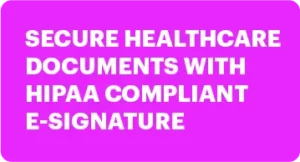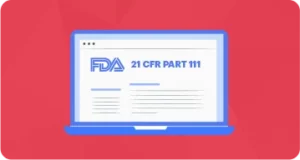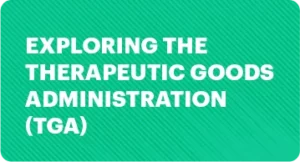Need to Respond to FDA 483s? Here’s What You Need to Know
Introduction: What are FDA 483 Observations?
FDA 483 observations (or “Form 483s”) are issued by the Food and Drug Administration (FDA) when findings of a GMP (Good Manufacturing Practice) inspection indicate a potential violation of the Federal Food, Drug, and Cosmetic Act. They are used to notify the company that the FDA has observed certain practices or conditions that could violate the law and may need corrective action.
These observations are not limited to the manufacturing environment — they can be issued regarding any area of an organization, including the quality control laboratory and research and development.
It’s essential for companies to recognize and respond quickly to any FDA 483 observations in order to avoid further risk and maintain compliance with FDA regulations. In this guide, we’ll cover the importance of responding to FDA 483 observations, how to go about creating your response, and what resources are available to help you.
Learning Objectives
By the end of this guide, readers should have a thorough understanding of what FDA 483 Observations are and how they should be handled. They should know the risks associated with not responding to an FDA 483, as well as the process for responding. They will become familiar with how to structure a response, the impact of timeliness, resources available and strategies to develop a long-term plan. Examples of savvy companies responding to an FDA 483 and regulatory strategies for doing so will be discussed. Finally, a conclusion and summary will be presented, along with recommended further reading.
Outline of Risks Associated with not Responding to an FDA 483
Failing to respond to an FDA 483 can have serious consequences. It is essential to understand the risks associated with non-compliance and take the necessary steps to ensure timely and accurate responses. Not only can ignoring FDA 483 observations result in potential fines, it can also damage your company’s reputation. Furthermore, potential customers may no longer be willing to purchase products that have been associated with breaches in safety regulations.
The following are some common risks associated with not responding to an FDA 483:
- Legal action – Failing to comply with regulatory requirements can result in legal action such as cease and desist orders or product recalls
- Financial losses – Companies can incur additional costs related to product recalls or fines from regulators
- Reputational damage – Customers and other stakeholders may view the company unfavorably if it fails to adhere to regulatory standards
- Loss of trust – Partners, vendors, and other stakeholders may no longer trust the company to abide by industry regulations
It is therefore important to understand the risks associated with not responding to an FDA 483 and take the necessary steps to ensure compliance.
The Process of Responding to an FDA 483 – Step-by-step walkthrough
If you receive an FDA 483 notification it is important that you respond in a timely and professional manner. Here are the steps you should take when responding to an FDA 483 observation:
- Step 1: Review the FDA 483 inspectional observations
- Step 2: Gather the relevant documentation and data to support your response
- Step 3: Develop a robust corrective action plan
- Step 4: Create a timeline of when the corrective actions will be implemented
- Step 5: Outline the process for monitoring the implementation of the corrective action plan
- Step 6: Send your response to the FDA in writing
- Step 7: Follow up with the FDA as necessary to ensure a satisfactory resolution to the observation
It is important to thoroughly review your FDA 483 to ensure that the corrective action plan addresses all the issues noted by the FDA inspector. Take the time to develop a comprehensive corrective action plan that effectively resolves the issues identified in the FDA 483. A comprehensive corrective action plan is key to obtaining a satisfactory resolution to the FDA 483.
When crafting your response to an FDA 483, it is important to structure the response in a way that is clear and concise. Having an organized response makes it easier to quickly assess the issues and provide the necessary information. In order to respond effectively to an FDA 483, here are some best practices and examples to follow.
First, organize your response into sections that address the specific violations outlined in the FDA 483 observation. This will make it easier for the FDA to identify each issue and your response to it. Additionally, include any relevant supporting documents or references that prove the effectiveness of your corrective actions.
Second, provide detailed information about the corrective action taken in each section. Explain what steps were taken, what the results were, and how this response addressed the issue. A thorough description of these steps will demonstrate that you are actively working to resolve the problem and understand the implications of your actions.
Third, ensure that any proposed corrective actions are realistic and achievable. If the FDA believes that the corrective action will not be implemented, they may require an alternative plan to be developed. To avoid this situation, make sure to elaborate on the feasibility of the proposed solution.
Finally, provide examples to illustrate the corrective actions you have taken. Get specific with the changes made to processes, procedures or products and how these have improve the safety and efficacy of your products. Showing tangible results will build trust with the FDA and help support your case.
Overall, the goal of responding to an FDA 483 is to demonstrate your understanding of the issue and to prove you have overcome the challenge with sustainable solutions. To make these responses as effective as possible it is important to structure them in a clear and concise manner with documented evidence of compliance.
The Importance of Timeliness
When it comes to addressing FDA 483 observations, time is of the essence. Businesses must respond quickly and effectively in order to ensure that they have the best chance of avoiding any repercussions or penalties. Delays in responding can have a negative impact on regulatory compliance and put businesses in a difficult situation.
Timely responses are critical because they show the FDA that you are taking their concerns seriously. If you delay your response, it can result in more stringent oversight from the FDA, along with possible fines or other punishments.
In addition, delaying your response to an FDA 483 can put your business in a position where you’re not able to provide a comprehensive solution. If the FDA has asked for certain changes to be made, your response will need to demonstrate that you understand their requests and are capable of implementing them in a timely manner.
The bottom line is that when it comes to responding to an FDA 483, timeliness is essential. The faster you respond, the better chance you have of addressing the FDA’s concerns and avoiding any potential penalties.
Resources Available to Help Respond to an FDA 483
Responding to an FDA 483 is a complex process, and it can be difficult to know where to start. It is important to remember that you don’t have to tackle it alone. There are several resources available to help you navigate the process of responding to an FDA 483.
The first step in getting the help you need is to consult with a qualified expert. Many companies rely on consulting services or legal teams with experience in FDA regulatory compliance. These professionals can help you craft a response tailored to your company’s individual needs, and ensure that all aspects of your response meet FDA requirements.
Additionally, organizations like the Food and Drug Administration (FDA) have various strategies and tools available to help companies comply with FDA regulations. For example, the FDA has developed the Compliance Assistance Program to help small businesses understand and follow FDA regulations. The FDA also offers online resources such as the Small Business Regulatory Enforcement Fairness Act (SBREFA), which can help companies better understand their responsibilities.
Finally, the FDA has developed the Compliance Assessment Tool, which helps companies evaluate their existing FDA compliance activities. This tool provides detailed information about how to identify and correct potential regulatory problems, and can help companies improve their overall compliance process.
By taking advantage of the resources available, companies can ensure they respond effectively to an FDA 483 observation and remain compliant with FDA regulations. Using expert advice and tools from the FDA can help companies navigate the process and develop a long-term strategy for responding to any future FDA 483 observations.
Developing a Long-Term Compliance Strategy to Respond to an FDA 483
Responding to FDA 483s is not always a one-time process. Companies should evaluate the issues outlined and develop a long-term compliance plan tailored to their specific operations. By having a comprehensive plan in place, an organization can address areas of deficiency in its operations more efficiently and ensure that they remain compliant in the long run.
Having a long-term compliance plan offers a number of benefits. It helps to reduce the amount of time needed to respond to FDA 483s, as the plan will already provide guidance on the steps needed to address any deficiencies. Additionally, it allows organizations to proactively evaluate potential risks and identify areas that may need to be addressed before they become a problem. A well thought out plan also serves to reduce internal confusion and provides a clear roadmap for all employees of how to handle future FDA 483s.
When developing a long-term compliance strategy, organizations should consider the following: What processes will be put in place to address potential FDA 483s? Who will be responsible for responding to FDA 483s? How will compliance issues be prevented or mitigated? How will employees be trained on FDA 483s? How will the organization track progress and evaluate its performance? Answering these questions can help companies create a comprehensive compliance plan that will address any future FDA 483s.
Examples of Savvy Companies Responding to an FDA 483
An FDA 483 is a Form FDA 483, Inspectional Observations, which is issued to firm management at the conclusion of certain FDA inspections. It identifies conditions that FDA investigators believe may be in violation of the Food, Drug and Cosmetic Act and related acts.
Though it’s important for businesses to take the FDA 483 very seriously, numerous companies have done an exemplary job of addressing the issues presented by efficiently crafting their responses and making sure they have the correct procedures and processes in place. Here are some case studies of smart businesses responding to an FDA 483.
- Company A conducted an internal audit in response to an FDA 483. The audit identified areas for improvement within the company’s processes and procedures and recommended key corrective actions. The company then implemented those corrective actions, resulting in improved compliance.
- Company B studied its FDA 483 findings, developed multiple recommendations, and executed a plan to meet compliance requirements. It also launched an educational effort to ensure all personnel understood the importance of meeting FDA requirements.
- Company C responded to an FDA 483 with a comprehensive corrective action plan that included detailed process updates and additional training for employees. The company then followed up with periodic reviews to make sure the corrective measures had been properly implemented.
These cases demonstrate that an effective response to an FDA 483 can result in increased compliance and long-term success for businesses.
Regulatory Strategies for Responding to FDA 483s
When responding to an FDA 483, there are some regulatory strategies that can be used to ensure compliance. First, it is important to develop a comprehensive understanding of the standards and regulations related to the particular FDA 483 being received. This means researching regulations, standards, and industry best practices related to the particular FDA 483 in question.
Second, it is important to develop an effective response plan. This plan should include a timeline of when different steps will be completed as well as an outline of the steps that need to be taken in order to address the observations noted in the FDA 483. It is also helpful to document all the steps taken to respond to the FDA 483 and maintain records of all responses and communications with the FDA.
Third, it is important to assess the risks associated with non-compliance. This means taking into account potential financial or legal penalties as well as any reputational risks associated with not responding appropriately to an FDA 483.
Finally, it is important to remember that responding to an FDA 483 in a timely and effective manner is essential to maintain good working relationships with the FDA and to avoid potential enforcement action.
Conclusion and Summary
It is of paramount importance to respond to FDA 483 Observations correctly and in a timely manner. It’s important to understand the risks associated with not responding to an FDA 483, as well as the process for responding.
When structuring your response, it is helpful to understand best practices and have an understanding of how long you have to respond. Resources and consultants are available to assist with responses, as well as developing a long-term compliance strategy.
Examples from savvy companies who have responded to FDA 483s successfully can help organizations understand how the process works. Regulatory strategies for responding to FDA 483s can also be useful when planning a response.
In summary, FDA 483 Observations are an important matter that must be dealt with efficiently and effectively. Responding correctly can help avoid costly fines or other penalties.
Recommended Further Reading
For those who are looking to go beyond the basics of responding to FDA 483 observations, there are various resources available to help provide a more comprehensive understanding. Here is a list of books, articles and online resources recommended further reading:
- FDA Regulations for Quality Systems (21 CFR Part 11) – Downloadable from the US FDA Website
- FDA CDER Small Business and Industry Assistance – Downloadable from the US FDA Website
- The Medical Device Industry Compliance Handbook – By Mark Mendelsohn and Renee Dion
- Guide to Quality System Regulations & ISO 9000 – By Clifford Matthews
- Working Guide to FDA 483 Observations & 484 Responses – By Cynthia Newby
- Adverse Event Reporting Procedures – From the CDRH Website
Q & A about Responding to FDA 483 Observations
1. What is an FDA 483 Observation?
A Form FDA 483 is issued to a firm that the FDA believes may be in violation of Food and Drug regulations. It lists objectionable conditions or practices that were observed during the inspection of the facility.
2. What are the risks associated with not responding to an FDA 483?
Failure to respond to an FDA 483 can result in fines, sanctions, suspension of operations, and other penalties imposed by the FDA.
3. What is the process of responding to an FDA 483?
The first step in responding to an FDA 483 is to review the comments and develop a plan of action on how to address the issues outlined in the FDA 483. Following this, a response letter must be written and submitted to the FDA within the specified timeframe. This should outline the actions taken to address to the observation, as well as any necessary corrective and preventive measures.
4. How should I structure my response to the FDA 483?
A structured response to an FDA 483 should include an acknowledgment of the deficiencies listed in the form, a detailed description of the root cause with evidence, as well as the corrective and preventative actions taken, or proposed to be taken.
5. What is the impact of response time on handling an FDA 483?
Response time to an FDA 483 is critical, as the longer it takes to respond to an FDA 483, the more likely the FDA will take enforcement action against the organization.
6. Are there resources available to help respond to an FDA 483?
Yes, there are a variety of resources available to help organizations respond to an FDA 483. These include FDA-related websites, attorneys and consultants who specialize in FDA compliance and regulation, as well as industry best practice publications for FDA compliance.
7. What examples of savvy companies responding can I look at?
There are numerous examples of successful responses to FDA 483s. A few of these include drug manufacturer Allergan’s response to their 2016 warning letter, medical device company Baxter’s response to their 483 in 2017, and software firm NeoFirm’s response to their 2019 warning letter.





